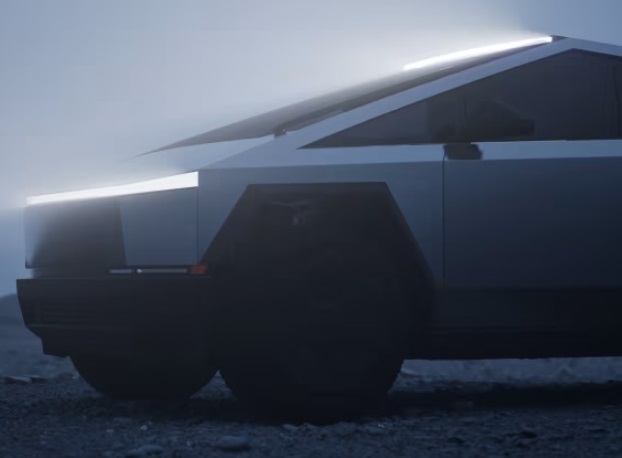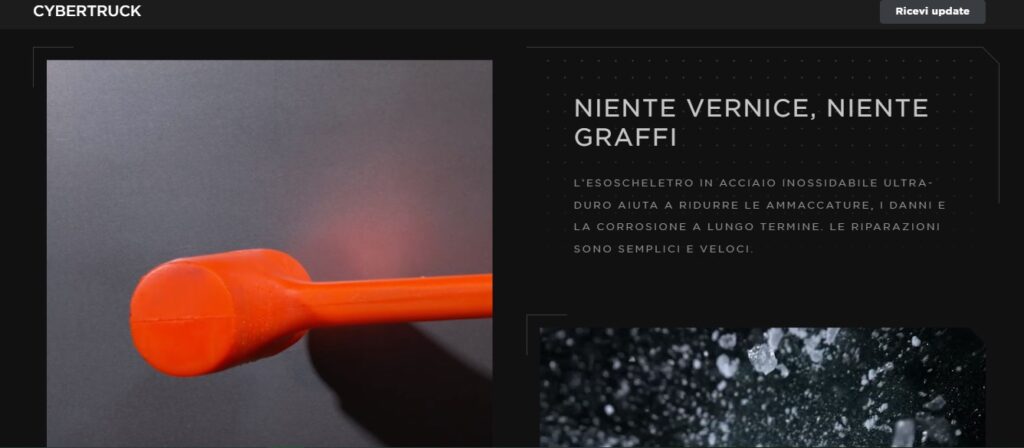Will the EU block Elon Musk’s Cybertruck at the border?

The out of the ordinary appearance, the stainless steel exoskeleton with armored glass and the many sharp edges raise more than one question about the Cybertruck's compatibility with the strict rules for EU approval
Over the last century cars have changed enormously. Not only from the point of view of power, but also of shape and aesthetics. This is mostly due to changing user tastes and the need to increase performance, with increasingly streamlined and aerodynamic frames, but also to the need to comply with very specific rules on the safety of occupants and pedestrians in the event of an accident. . Think, for example, of the cars of the early 1900s whose bonnets were often adorned with statuettes on the radiator knob which the buyer could even customize to his liking: if you hit a passer-by they became sharp spikes. For this reason, the few manufacturers that still use bonnet ornaments (Rolls Royce and Mercedes) must meet certain requirements. Or, again, think of the many protruding and metallic elements of the '50s and '60s and the low but sharp profile of the cars of the following decade. When it comes to cars, designers can't indulge themselves: a very low ride could crumble a pedestrian's legs; one very high chest. The stranger the shapes, the greater the blind spots for the driver. Especially in Europe the rules are very strict (precursor to Directive 2003/102/EC ): Elon Musk could find out at his own expense if he were banned from marketing the Cybertruck, at least in the EU.
CYBERTRUCK, THE TOY OF DISCORD
In the Old Continent we rely on the Euro NCAP tests which, through tests with dummies, evaluate the safety for the occupants of the car and for pedestrians, with simulated collisions at dozens and dozens of kilometers per hour without braking. The resistance of the materials and the presence of sharp edges can determine whether a car is approved or rejected. And precisely on this last front, Tesla 's Cybertruck raises many questions because its shape, distancing itself from the masses (the common rules have imposed a certain similarity between the various cars), could prove to be a disadvantage in this type of tests.
If this were the case, it would only be the last obstacle for a car with a troubled destiny to say the least, announced four years ago and arriving on the market two years behind schedule. Let's also not forget that the debut at the beginning of December was laughable: just 12 models were delivered to those who had paid 100 dollars for the pre-order (today 250 are needed, after which you get in line and wait: orders exceed 2 million and currently produce 125 thousand a year).
Not only that: in 2019, Elon Musk promised that the list price would be around 39,990 dollars, while the basic model today is offered at 60,990 (56 thousand euros). In practice it has doubled, while the autonomy has decreased: the promised one was 800km, today's would be around 550 (750 declared if you purchase the additional Range Extender battery which sacrifices a good part of the space in the rear compartment).
WILL THE EU APPROVE THE CYBERTRUCK?
As we said, the out of the ordinary appearance that makes Cybertruck a huge toy more similar to Batman or Robocop's car than a real pick up, the bulletproof stainless steel exoskeleton and the many sharp edges of the bodywork pose more than a question about compatibility with the strict rules for EU approval.

Currently standing in front of its angular bumper is Barend Wolf, head of the Vehicle Technology division at the Deutschen Verkehrssicherheitsrat, the German road safety council. Interviewed by Spiegel , the official was rather feral: "in our opinion the Tesla Cybertruck in its current form and without major modifications cannot be registered in Germany". A setback that would almost certainly result in a community rejection, because national rules are unlikely to be more restrictive: the real bottleneck is in fact the EU directive.
ALL DOUBTS ABOUT PEDESTRIAN SAFETY
Wolf also hinted that the Cybertruck rebus sic stantibus would lack the necessary requirements for the protection of pedestrians as well as others, without however giving details. For several observers, among the other main limitations of the vehicle there would be the shape of the front which, from inside the passenger compartment, would prevent the driver from seeing the presence of children a few centimeters from the bonnet of the vehicle.
AlVolante writes: “the CEO of Tesla, Elon Musk, at the time, had spoken of an exoskeleton, i.e. a resistant external "skin" that participates in the management of the stresses induced by movement. It is something different both from the load-bearing body of conventional cars and from the solution, universally adopted by other pickups, which sees a separate chassis with a bodywork fixed on top.”
And, again: “The edges of the bodywork may not comply with European standards: they are “live” instead of having a radius of at least 3.2 mm. Beyond the shape, its construction in hard stainless steel sheet, like the bonnet and the rest of the bodywork, raises more than one doubt as it is very far from the controlled compliance that the fronts and bonnets must have to pass the Euro NCAP tests. ”
With the ironic consequence that while the slogan 'screamed' on the official website is that the vehicle was "built to be used on every planet", Tesla's Cybertruck does not appear to have been built to comply with EU regulations on pedestrian safety but having the comfort of the occupants as its sole objective.
An extremely selfish way of understanding the car, as said by the CEO of Ancap, the Australian counterpart of the Euro Ncap, James Goodwin, at the presentation of the Cybertruck: "we fear that Tesla is more interested in the passengers of the vehicle but in any case case cannot ignore other road users".
A selfish vision of the vehicle which in Germany has even made it unpleasant for environmentalists, the main sponsors of the transition towards the electric car, as Repubblica writes: in the country where awareness for the environment has made the Greens grow and brought them into government, it went so far as to declare that although it is an electric vehicle that saves large quantities of CO2, "there is no reason to sacrifice road safety for climate protection".
This is a machine translation from Italian language of a post published on Start Magazine at the URL https://www.startmag.it/smartcity/lue-blocchera-alla-frontiera-il-cybertruck-di-elon-musk/ on Tue, 19 Dec 2023 10:51:37 +0000.
